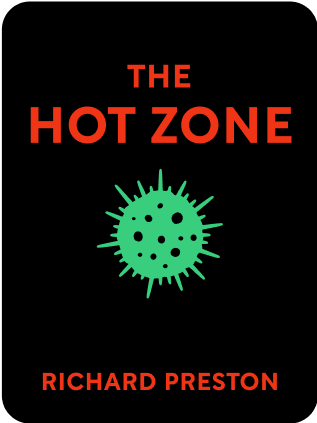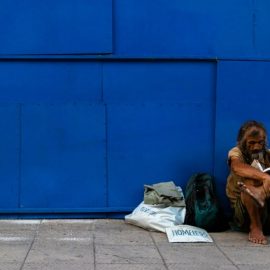

This article is an excerpt from the Shortform summary of "The Hot Zone" by Richard Preston. Shortform has the world's best summaries of books you should be reading.
Like this article? Sign up for a free trial here .
What was the Ebola outbreak of 1976? How did it start and how was it contained?
The Ebola outbreak of 1976 was actually two outbreaks, one of Ebola Sudan, and one of Ebola Zaire. Though the virus spread through the community and hospital, the virus ended when the government enforced a strict quarantine.
Keep reading to find out more about the Ebola outbreak of 1976.
Ebola Outbreak of 1976: Ebola Sudan
The first known case of Ebola was in a man known as Yu. G., in the summer of 1976. Yu. G. lived in a southern Sudan, about 500 miles from Mount Elgon.
Yu. G. never went to the hospital—he died in a cot at home—nor was he well known outside his family and coworkers. Nevertheless, he set off an outbreak of the virus that was later named Ebola Sudan, and starting the Ebola outbreak of 1976.
No one knows where or how Yu. G. contracted the virus, but it soon spread to a few of his coworkers, from whom it spread to friends, families, and a nearby hospital. From the hospital, the virus took off through the reuse of dirty needles.
Ebola Sudan killed hundreds of people in central Africa. The virus’s 50 percent kill rate was comparable to the bubonic plague of the Middle Ages.
And then, suddenly, it stopped. It’s unclear why the Ebola outbreak of 1976 ended, but two possible reasons are:
- The hospital became the epicenter of the outbreak, and everyone at the hospital either died or fled the city. The hospital staff’s departure ceased medical procedures and the use of dirty needles, which halted the spread of the virus.
- The virus may have simply been too deadly, killing its hosts so quickly that they didn’t have time to infect many other people. Additionally, the virus was only transmitted through blood, which further limited its spread.
Second Ebola Outbreak of 1976
Just two months after the Ebola Sudan outbreak ignited, Ebola Zaire in 1976 appeared 500 miles away, in the mostly rural Bumba Zone of northern Zaire. Ebola Zaire was even deadlier, with almost double the kill rate of Ebola Sudan. The Zaire Ebola outbreak of 1976 would be even deadlier than Ebola Sudan.
The virus appeared at the rural Yambuku Mission Hospital, which was run by Belgian nuns. No one knows who the first human was to contract Ebola Zaire in 1976, or from what—whether animal meat, insect blood, a spider bite, or something else. The hospital’s practice of reusing dirty needles made it impossible to know which patient first brought the virus into the hospital during the Ebola 1976 outbreak.
Just a drop of infected blood is enough to transmit Ebola, which was dangerous for the spread of a disease as deadly as Ebola Zaire in 1976. so the virus quickly spread among the hospital’s nurses, injection patients, and their families, hitting 55 surrounding villages at once.
When one nun at the hospital, known as Sister M. E., became infected, a priest and another nun flew her to Kinshasa, the country’s capital. They reasoned that she would receive better treatment there, at Ngaliema Hospital. Sister M. E. survived the trip and then died at Ngaliema Hospital, becoming a victim of the Zaire Ebola outbreak of 1976.
The doctors at Ngaliema Hospital recognized the nun’s symptoms as similar to Marburg, so they sent samples of her liver and blood to national laboratories in Belgium and England.
Mayinga Carries the Virus Around Kinshasa
Meanwhile, in Kinshasa, a nurse from Ngaliema Hospital who helped care for Sister M. E. became sick during the Ebola outbreak of 1976.
Despite her symptoms, the nurse, named Mayinga, spent two days walking through Kinshasa. During those two days, she waited in line at the Zairean foreign ministry, took taxis, visited two hospitals, and sat in crowded waiting rooms.
Most likely, Mayinga knew she’d contracted the virus but was in denial. She visited the foreign ministry in hopes of getting a travel permit before she became visibly sick. Mayinga’s denial also explains why she didn’t initially seek treatment at her hospital, where the staff knew her and would have recognized her symptoms.
Finally, after receiving no helpful treatment or advice from the two hospitals, she returned to Ngaliema Hospital for treatment with Ebola Zaire in 1976.
News spread among local residents and officials that a nurse who was infected with the same virus that had devastated parts of the Bumba Zone had spent two days traveling around a city of two million people.
Officials at the World Health Organization went into high alert. The Zairean President ordered soldiers to enforce quarantine at Ngaliema Hospital and to isolate Bumba Zone, where the virus originated.
Mayinga died at Ngaliema Hospital. Some of Mayinga’s blood still sits in vials in scientific laboratories as a sample of Ebola Zaire from the Ebola 1976 outbreak.
Officials tracked down Mayinga’s whereabouts during those two days in Kinshasa and identified 37 people who had close contact with her. None of the 37 people contracted the virus—not even the person with whom she’d shared a bottle of soda. This suggested the virus was neither airborne nor easily transmissible in the Ebola 1976 outbreak.
Both Ebola Sudan and Ebola Zaire were extremely deadly. However, the Zaire Ebola outbreak of 1976 proved that the Zaire strain was deadlier than other strains doctors and scientists had seen before.

———End of Preview———
Like what you just read? Read the rest of the world's best summary of Richard Preston's "The Hot Zone" at Shortform .
Here's what you'll find in our full The Hot Zone summary :
- The many different strains of Ebola, including the deadliest kind with a kill rate of 90%
- How scientists unraveled the mystery of a new strain of Ebola
- How Ebola could become airborne, becoming one of the deadliest viruses known






